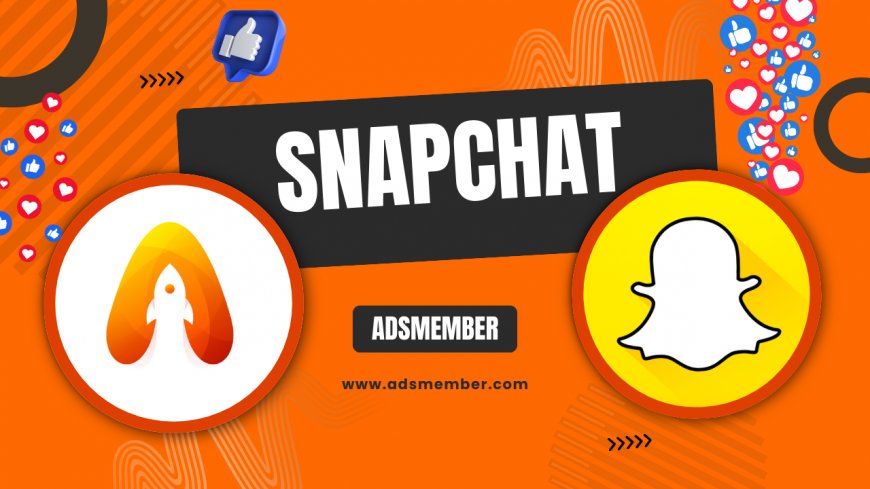Leaked Snapchat Content: Risks and How to Stay Safe
Discover the risks of leaked Snapchat content and learn actionable steps to protect your privacy. Stay safe from hacks and leaks with expert tips.

Honestly, hearing about leaked Snapchat content sends shivers down my spine. It’s a harsh reminder that even platforms built on temporary sharing aren’t immune to privacy breaches. Snapchat, with over 363 million daily active users as of 2022 (Statista, source), is a goldmine for hackers. When snaps or stories get leaked, the emotional toll—embarrassment, anxiety, or worse—can be devastating. In my opinion, understanding the risks and taking proactive steps is non-negotiable. Let’s dive into why leaks happen, real-world cases, and how you can safeguard your account.
Why Does Snapchat Content Get Leaked?
Let’s face it—Snapchat leaks aren’t random. They often stem from weak passwords, phishing scams, or third-party apps promising extra features. Hackers exploit these vulnerabilities to access private snaps or even entire accounts. According to a 2019 report by Pew Research, 64% of Americans have experienced some form of data theft or breach. Snapchat’s ephemeral nature tricks users into a false sense of security, but screenshots or screen recordings can easily bypass that. I’ve seen friends fall for shady ‘Snapchat enhancers’ only to regret it later. It’s a wake-up call.
Common Causes of Leaks
- Phishing Attacks: Fake emails or messages trick users into sharing login details.
- Third-Party Apps: Unauthorized tools often steal data under the guise of cool features.
- Weak Passwords: Using ‘password123’ is practically an invitation for hackers.
- Device Vulnerabilities: Unsecured phones or public Wi-Fi expose your data.
Real-World Impact of Leaked Snapchat Content
The fallout from leaked Snapchat content can be brutal. I remember the 2014 ‘Snappening’ incident, where nearly 200,000 private snaps were exposed due to a third-party app breach. Users faced public humiliation, and some even lost jobs over compromising content. Honestly, it’s heartbreaking to see personal moments weaponized. Beyond emotional damage, leaks can lead to identity theft or blackmail. If you think it can’t happen to you, think again—hackers don’t discriminate.
Case Study: The Snappening
In 2014, a massive leak dubbed ‘The Snappening’ shocked the Snapchat community. Hackers exploited a flaw in a third-party app called SnapSaved, accessing private images and videos. These were posted on forums, leaving users helpless. Snapchat denied a direct breach, but the incident highlighted the dangers of external tools. It’s a stark lesson: stick to official apps. Curious about more Snapchat safety tips? Check out our Snapchat Security Guide.
How to Protect Yourself from Snapchat Leaks
Securing your Snapchat isn’t rocket science, but it does take effort. I’ve learned the hard way that a little caution goes a long way. Start with the basics—strong passwords and two-factor authentication (2FA). Avoid sharing sensitive content, even if it ‘disappears.’ Trust me, nothing is truly gone online. Here are actionable steps to keep your account safe from becoming the next leaked Snapchat headline.
Enable Two-Factor Authentication
First things first, turn on 2FA. It adds a second layer of security by requiring a code sent to your phone or email. Go to Settings > Two-Factor Authentication in Snapchat and follow the prompts. It’s a small step that can stop hackers cold. I’ve had friends skip this, only to lose access to their accounts. Don’t make that mistake.
Avoid Third-Party Apps
Those apps promising to save snaps or boost features? They’re often traps. Snapchat’s Terms of Service explicitly ban them, and using one risks a permanent ban—or worse, a data leak. Stick to the official app. If you’re tempted, remember the Snappening. It’s just not worth the risk.
Be Mindful of What You Share
Even with privacy settings, snaps can be screenshot or recorded. I always ask myself, ‘Would I be okay if this got out?’ before posting anything sensitive. Adjust your privacy settings to limit who sees your stories—go to Settings > Who Can… and tweak as needed. Better safe than sorry.
Comparison of Snapchat Security Features vs. Other Platforms
Curious how Snapchat stacks up against other apps in terms of security? I’ve put together a comparison table using data from platform documentation and user reports. It’s eye-opening to see where Snapchat shines—and where it lags.
| Platform | Two-Factor Authentication | End-to-End Encryption | Ephemeral Content | Breach History |
|---|---|---|---|---|
| Snapchat | Yes | Partial (Chats, not Stories) | Yes | Yes (2014 Snappening) |
| Yes | Partial (DMs) | Partial (Stories) | Yes (2019 Data Leak) | |
| Yes | Yes (All Chats) | No | Minimal |
As you can see, Snapchat’s ephemeral content is a unique selling point, but its partial encryption leaves gaps. WhatsApp, with full end-to-end encryption, feels safer for private chats. My take? Use Snapchat for fun, casual content, but avoid anything too personal.
Unique Tip: Use Snapchat’s ‘My Eyes Only’ Feature
Here’s a gem most people overlook: Snapchat’s ‘My Eyes Only’ feature. It lets you store sensitive snaps in a password-protected folder within the app. Go to Memories, swipe to My Eyes Only, and set a PIN. Even if someone accesses your phone, they can’t see these without the code. I use it for anything I’d hate to see leaked. It’s not foolproof, but it’s an extra layer of defense. Give it a try!
What Should I Do If My Snapchat Gets Leaked?
If you’re dealing with leaked Snapchat content, don’t panic—but act fast. Change your password immediately and enable 2FA if you haven’t already. Report the incident to Snapchat via their Support page. If the content is being shared online, request removal through the platform hosting it. I’ve seen cases spiral out of control because people waited too long. It’s tough, but staying calm helps you think clearly.
How Common Are Snapchat Leaks?
Sadly, Snapchat leaks aren’t rare. While exact numbers are hard to pin down, Statista reports that 23% of social media users have had accounts compromised. Third-party breaches and user error are often to blame. I’ve noticed smaller leaks don’t always make headlines, but they still hurt. Check your account activity regularly in Settings > Account Actions for anything suspicious. Prevention is your best bet.
Can Snapchat Be Held Responsible for Leaks?
Legally, it’s tricky. Snapchat’s Terms of Service state they aren’t liable for user-generated content or third-party breaches. In my opinion, that’s frustrating—especially after incidents like the Snappening. If a leak stems from their servers, you might have a case, but most leaks tie back to user mistakes. Focus on securing your account rather than pointing fingers. It’s the harsh reality of social media.
What's Your Reaction?
 Like
0
Like
0
 Dislike
0
Dislike
0
 Love
0
Love
0
 Funny
0
Funny
0
 Angry
0
Angry
0
 Sad
0
Sad
0
 Wow
0
Wow
0

















































